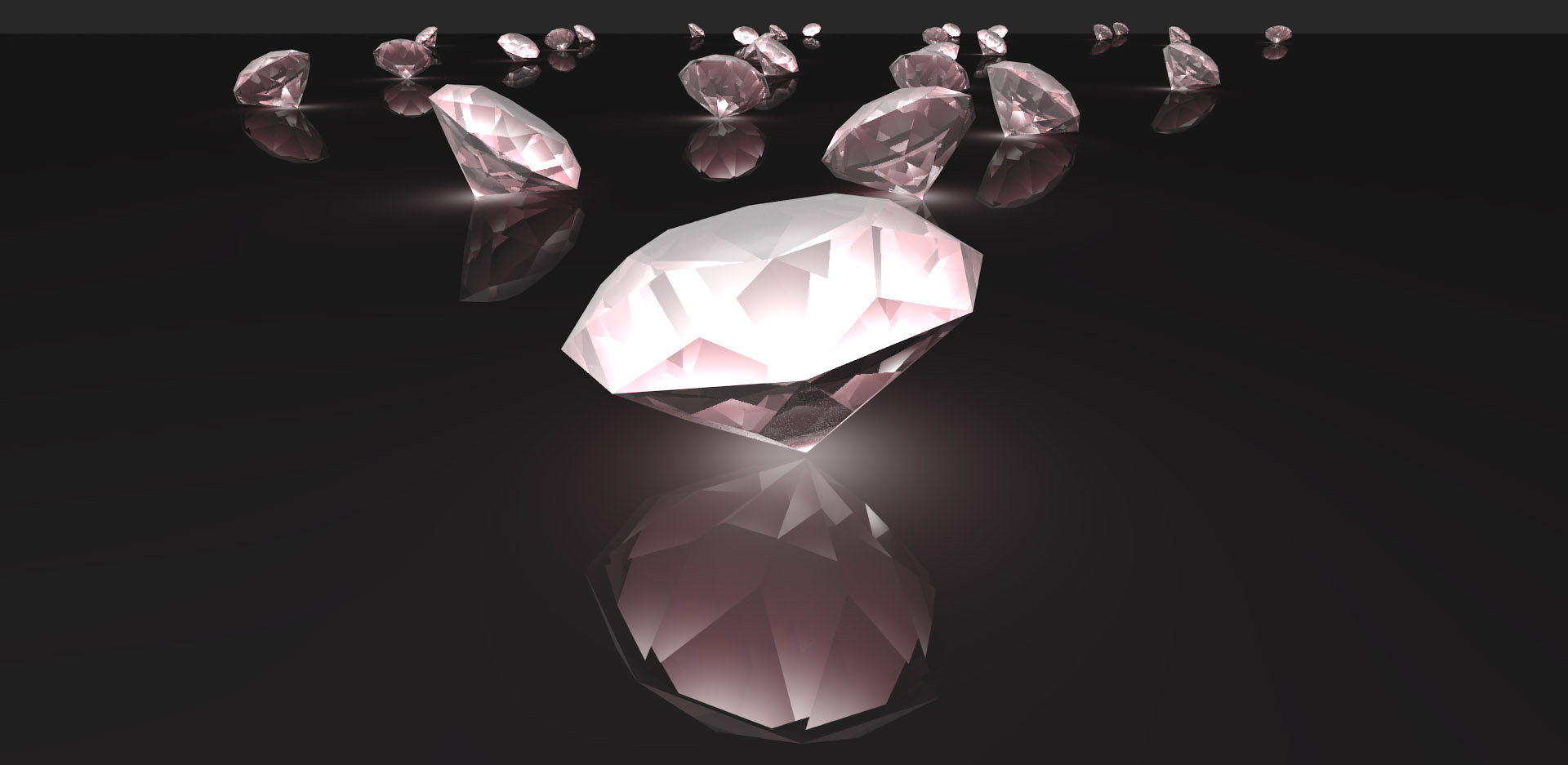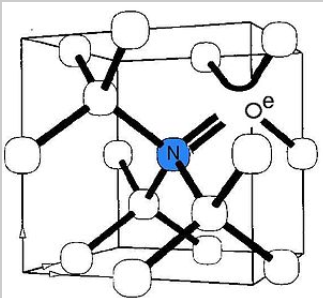Nanodiamond quantum sensors pave way to MRI for living cells
December 9, 2013

Nanodiamonds (credit: H.S Knowles and C.H.H Schulte)
Nanoscopic thermal and magnetic field detectors that could be inserted into living cells could enhance our understanding of everything from chemical reactions within single cells to signaling in neural networks and the origin of magnetism in novel materials.
Atomic impurities in natural diamond structure give rise to the color seen in rare and coveted pink, blue and yellow diamonds. But these impurities are also a major research focus in emerging areas of quantum physics.
[+]
One such defect, the nitrogen-vacancy center
(NVC), consists of a gap in the crystal lattice next to a nitrogen
atom. This system tightly traps electrons whose spin states can be
manipulated with extreme precision.
Nitrogen-vacancy center (credit: Wikimedia Commons)
Electron coherence — the extent to which the spins of these particles can sustain their quantum mechanical properties — has been achieved to high levels in the NVCs of large “bulk” diamonds, with coherence times of an entire second in certain conditions — the longest yet seen in any solid material.
However in nanodiamonds — nanometer sized crystals that can be produced by milling conventional diamond — any acceptable degree of coherence has, until now, proved elusive.
Nanodiamonds offer the potential for both extraordinarily precise resolution because they can be positioned at the nanoscale, and biocompatibility — they have can be inserted into living cells. But without high levels of coherence in their NVCs to carry information, these unique nanodiamond benefits cannot be utilized.
Quantum biosensors
By observing the spin dynamics in nanodiamond NVCs, researchers at Cambridge‘s Cavendish Laboratory, have now identified that it is the concentration of nitrogen impurities that impacts coherence, rather than interactions with spins on the crystal surface.
By controlling the dynamics of these nitrogen impurities separately, they have increased NVC coherence times to a record 0.07 milliseconds longer than any previous report, an order of magnitude, putting nanodiamonds back in play as an extremely promising material for quantum sensing.
“Our results unleash the potential of the smallest magnetic field and temperature detector in the world,” said Helena Knowles, a researcher on the study. “Nanodiamond NVCs can sense the change of such features within a few tens of nanometers; no other sensor has ever had this spatial resolution under ambient conditions. We now have both high spin coherence and spatial resolution, crucial for various quantum technologies.”`
Dr Dhiren Kara, who also worked on the study, points out that the nanodiamond’s biocompatibility can also provide noninvasive optical access to magnetic changes within a living cell — essentially the ability to perform MRI and detect, for instance, a cell’s reaction to a drug in real time.
“We may also be able to answer some key questions in material science, such as magnetic ordering at the edges of graphene or the origin of magnetism in oxide materials,” Kara said.
Dr Mete Atature, director of the research, added: “The pursuit of simultaneous high NVC coherence and high spatial resolution, and the fact that nanodiamonds couldn’t deliver on this promise until now, has required researchers to invest in alternative means including advanced nanofabrication techniques, which tends to be both expensive and low-yield.”
Abstract of Nature Materials paper
Nitrogen-vacancy (NV) centres in diamond are attractive for research straddling quantum information science, nanoscale magnetometry and thermometry. Whereas ultrapure bulk diamond NVs sustain the longest spin coherence times among optically accessible spins, nanodiamond NVs exhibit persistently poor spin coherence. Here we introduce high-purity nanodiamonds accommodating record-long NV coherence times, >60 μs, observed through universal dynamical decoupling. We show that the main contribution to decoherence comes from nearby nitrogen impurities rather than surface states. We protect the NV spin free precession, essential to d.c. magnetometry, by driving solely these impurities into the motional narrowing regime. This extends the NV free induction decay time from 440 ns, longer than that in type Ib bulk diamond, to 1.27 μs, which is comparable to that in type IIa (impurity-free) diamond. These properties allow the simultaneous exploitation of both high sensitivity and nanometre resolution in diamond-based emergent quantum technologies.
(¯`*• Global Source and/or more resources at http://goo.gl/zvSV7 │ www.Future-Observatory.blogspot.com and on LinkeIn Group's "Becoming Aware of the Futures" at http://goo.gl/8qKBbK │ @SciCzar │ Point of Contact: www.linkedin.com/in/AndresAgostini
 Washington
Washington